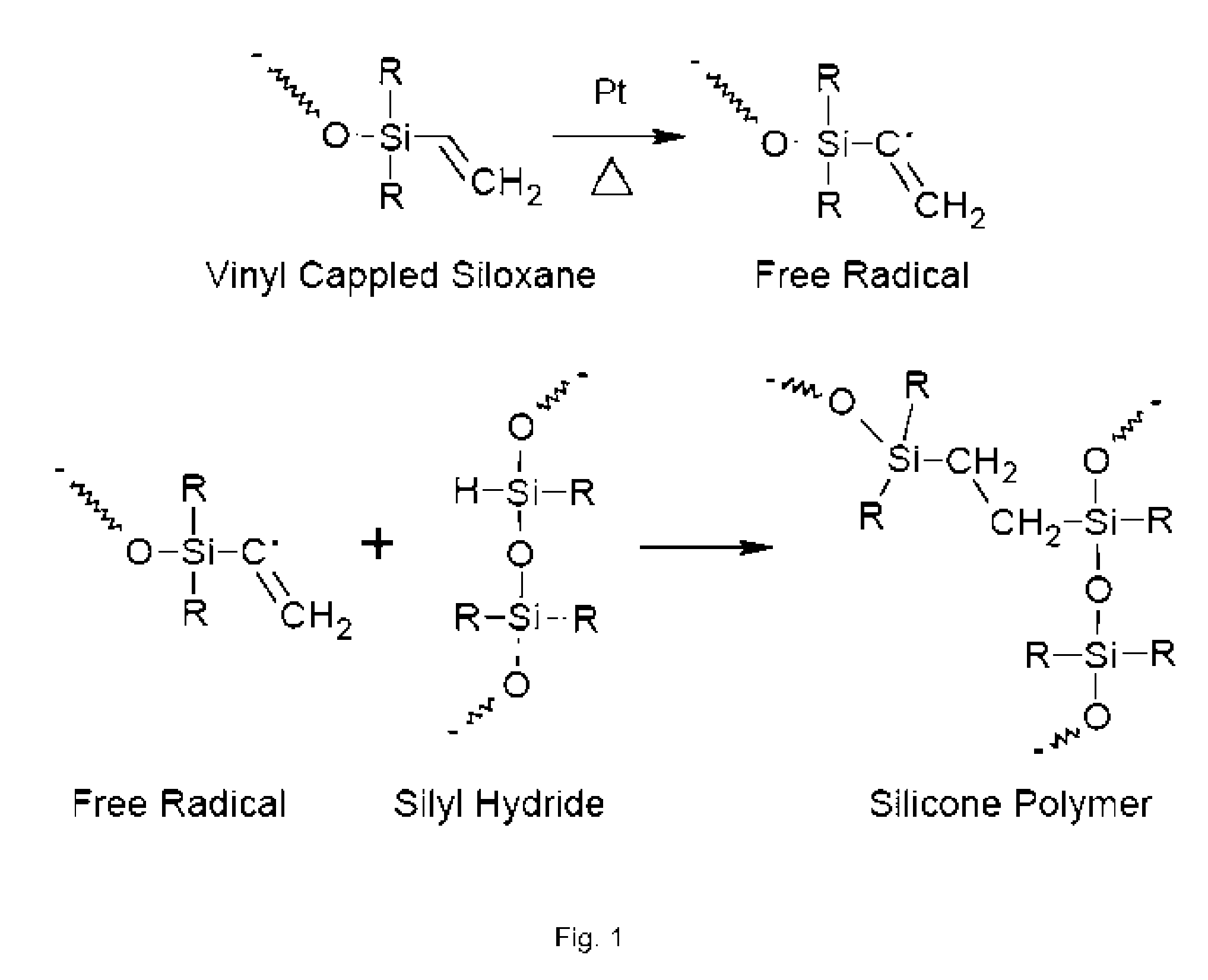High temperature and chemical resistant process for wafer thinning and backside processing
a technology of chemical resistance and wafer thinning, which is applied in the direction of basic electric elements, semiconductor/solid-state device manufacturing, electric devices, etc., can solve the problems of silicon oxide thermal deposition and curing that are not satisfying certain processes, and achieve the effect of facilitating mounting
- Summary
- Abstract
- Description
- Claims
- Application Information
AI Technical Summary
Benefits of technology
Problems solved by technology
Method used
Image
Examples
Embodiment Construction
[0012]The invention utilizes a liquid form adhesive composition that is devised to be applied to semiconductor wafers by spin-on techniques, then cured, and subsequently used to mount wafers to rigid substrates. Essential to the invention is the provision of a high temperature and chemical resistant spin-on adhesive to provide high thermal resistance for subsequent thinning and backside wafer processing. The liquid adhesive is applied to the wafer front-side surface (i.e., device area) at specific conditions to achieve a defined thickness and to protect the device structures. Curing is done by thermal exposure, which cross-links the adhesive to produce a uniform, smooth, chemical and thermal resistant coating. Depending upon the wafer topography and a need for further surface penetration and planarization, the process may be repeated to lay down a second layer. Once the wafer is coated and cured, a thin layer is applied to the wafer to wet the surfaces for mounting. Mounting is faci...
PUM
 Login to View More
Login to View More Abstract
Description
Claims
Application Information
 Login to View More
Login to View More - R&D
- Intellectual Property
- Life Sciences
- Materials
- Tech Scout
- Unparalleled Data Quality
- Higher Quality Content
- 60% Fewer Hallucinations
Browse by: Latest US Patents, China's latest patents, Technical Efficacy Thesaurus, Application Domain, Technology Topic, Popular Technical Reports.
© 2025 PatSnap. All rights reserved.Legal|Privacy policy|Modern Slavery Act Transparency Statement|Sitemap|About US| Contact US: help@patsnap.com



